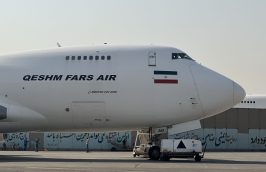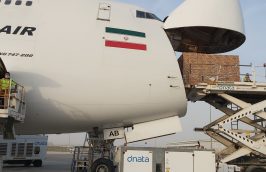Airway bill
07 March 2024
comment count: 30
view count: 191

AIR WAYBILL
The airwaybill, especially in air transport, plays a vital role, and understanding the different types of airwaybills are crucial for both senders and receivers of goods. Below is a summary of the presented information regarding the Master Air Waybill (MAWB) and House Air Waybill (HAWB), along with the differences between these two types of waybills:
Master Air Waybill (MAWB)
-Definition: The Master Air Waybill, or MAWB, is the primary document issued by airlines after receiving goods from a freight forwarder. This airwaybill serves as a contract between the carrier and the forwarder, indicating the carrier’s responsibility for transporting the goods.
-Usage: The MAWB confirms that the goods have been handed over to the carrier, who is responsible for delivering them to the destination. This document also allows the tracking of the shipment’s status.
– Advantages:
– It has legal value and can be pursued in legal matters.
– It is used for ensuring the cargo.
– It remains valid until the goods are delivered, and the carrier is liable for damage or loss during transportation.
House Air Waybill (HAWB)
– Definition: The House Air Waybill, or HAWB, is a subordinate document issued by the carrier for each shipment. This waybill confirms that the goods have been received from the sender and are to be delivered to the main receiver.
– Usage: The HAWB serves as a direct contract between the carrier and the receiver of the goods, ensuring that the shipment is only delivered to the designated main receiver.
– Advantages:
– Acts as a guarantee for the safety and security of the cargo.
– The specific identification of the main receiver in this waybill prevents delivery to any representatives.
Key Differences Between MAWB and HAWB
- Role: The MAWB is the primary document between the forwarder and the carrier, while the HAWB is the contract between the carrier and the receiver.
- Usage: The MAWB is important for tracking and ensuring the cargo, while the HAWB primarily serves as a guarantee of the shipment’s integrity to the recipient.
3. Information Type: The MAWB includes general information about the goods, sender, and main receiver, while the HAWB must specifically include detailed information about the actual main receiver.
Final Notes:
-Each airwaybill must be issued specifically for each consignment.
– If the related costs of the airwaybill are not paid, the carrier will not have an obligation to deliver the goods.
Master Air Waybill (MAWB) Specifications
The Master Air Waybill (MAWB) is an essential document in air transport, used for sending goods to various destinations. This airwaybill is issued in three copies: one for the sender, one for the receiver, and one for the carrier. The MAWB contains the following information:
- Sender’s Details: Includes passport information, address, phone number, and email.
- Receiver’s Details: Full address, phone number, and email of the recipient.
- Carrier’s Name: The name of the shipping airline.
- Carrier Code: A unique three-digit code for the airline.
- Origin Airport Code: The code for the airport of departure.
- Destination Airport Code: The code for the destination airport.
- Unique Waybill Code: An eight-digit unique number assigned to the MAWB.
- Cargo Information: Details such as weight, volume, dimensions, quantity, and type of packaging.
- Mode of Transport: The means by which the goods will be transported.
- Waybill Charges: The cost associated with the waybill.
- Payment Terms: Conditions and methods for payment of transport charges.
- Flight Number: The identifier for the flight.
- Delivery Number: The number assigned for cargo delivery.
- Arrival and Delivery Times: Scheduled landing time and expected delivery time for the cargo.
- Special Instructions: Guidelines for handling specific types of cargo, such as perishable goods.
11-Digit Code for MAWB and HAWB
The MAWB includes an 11-digit code issued uniquely for each shipment, which allows tracking at any stage. This code is crucial for the loading, transportation, and customs clearance processes. The 11-digit code consists of the following:
- First 3 Digits: Airline code (a unique three-digit identifier for each airline).
- Next 3 Digits: IATA code for the airport.
- Last 8 Digits: The unique waybill number.
Advantages of MAWB and HAWB
Issuing both the Master and House airwaybills offer numerous benefits for senders and receivers, including:
- Streamlined Delivery and Clearance Processes: The airwaybill code simplifies these processes.
- Reduced Risk of Damage, Loss, and Theft: Enhanced accountability reduces the likelihood of issues during transport.
- Lower Transport Costs: Efficient handling may lead to cost reductions.
- Online Tracking Capability: Cargo can be tracked online using the airwaybill code through airline systems.
Differences Between MAWB (Master Air Waybill) and HAWB (House Air Waybill)
Understanding the differences between MAWB and HAWB can help prevent potential errors by senders and receivers. The two types of airwaybills differ in important aspects such as the receiver, issuer, responsibilities, and control. Here’s a comparison:
- MAWB: Known as the main airwaybill or master document, it is issued by the airline upon receiving goods from the sender or freight forwarder.
- HAWB: Recognized as the subordinate air waybill, it is issued for each shipment.
- Issuing Authority: The MAWB is issued by the actual carrier of the goods, which is typically the airline. The HAWB is issued by the freight forwarder, which may not be the carrier of the goods.
- Receiver’s Definition: In the MAWB, the receiver can be the cargo carrier or the freight company. In contrast, the HAWB designates the final recipient or the actual owner of the goods.
- Settlement Conditions: The main owner of the goods cannot obtain documents from the airline without settling financial matters with the forwarding company. Thus, the MAWB serves as a guarantee for settling accounts with forwarding companies.
- Responsibility and Control: The MAWB places responsibility and control of the entire cargo shipment on the carrier or freight forwarder, which significantly impacts efforts for cargo security and safekeeping. In the HAWB, responsibility and control of the cargo are shared between the freight forwarder and the carrier.
- Documentation: The MAWB greatly aids documentation because all documents related to this important contract are included, simplifying management. The HAWB is specifically issued for the designated sender and receiver, making it particularly significant for these parties.
- Customs Processes: The MAWB simplifies and expedites customs processes, as all customs procedures can be conducted using the 11-digit airwaybill code. The HAWB is suitable for perishable, special, and sensitive goods since it contains information related to handling, storing, and transporting those goods.
- Full Container Reservation: To reserve a full container for shipping goods, a HAWB must be issued to ensure all pertinent information is
The waybill, especially in air transport, plays a vital role, and understanding the different types of waybills is crucial for both senders and receivers of goods. Below is a summary of the presented information regarding the Master Air Waybill (MAWB) and House Air Waybill (HAWB)



